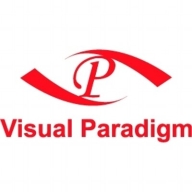

iServer and Visual Paradigm are products competing in the enterprise architecture and business modeling domain. iServer excels in integration capabilities, whereas Visual Paradigm is known for its powerful modeling features.
Features: iServer integrates deeply with Microsoft technologies, allowing for streamlined operations within IT ecosystems. Its capabilities in enterprise architecture modeling and workflow management stand out. Visual Paradigm offers versatile modeling tools for UML, BPMN, and a wide range of design methodologies, providing extensive documentation and diagramming support. Its process simulation and animation features add significant value.
Room for Improvement: iServer could enhance user experience by offering more flexibility beyond Microsoft-centric environments and improving UI customization options. Support for non-Microsoft databases could also be beneficial. Visual Paradigm might improve by simplifying complex setup processes and offering more intuitive user guidance. Additionally, enhancing integration with other enterprise tools would broaden its appeal.
Ease of Deployment and Customer Service: iServer offers straightforward deployment, especially for enterprises heavily invested in Microsoft, with reliable customer service support. Visual Paradigm provides a flexible deployment model across different platforms and emphasizes proactive customer support, making it suitable for diverse environments.
Pricing and ROI: iServer generally involves a higher initial setup cost but is considered to deliver a strong ROI for organizations focused on Microsoft integration. Visual Paradigm tends to be more cost-effective, offering significant ROI through its versatility and support for multiple modeling needs across various methodologies.


iServer is a unified software platform and enterprise modeling environment that extends and enhances the familiar, market leading Microsoft Visio and Office products. Core capabilities provided by iServer include an enhanced Microsoft Visio diagramming interface, a powerful central repository for all enterprise architecture or business process models and documentation, and a range of tools for visualization, analysis and decision making.
We monitor all Business Process Design reviews to prevent fraudulent reviews and keep review quality high. We do not post reviews by company employees or direct competitors. We validate each review for authenticity via cross-reference with LinkedIn, and personal follow-up with the reviewer when necessary.